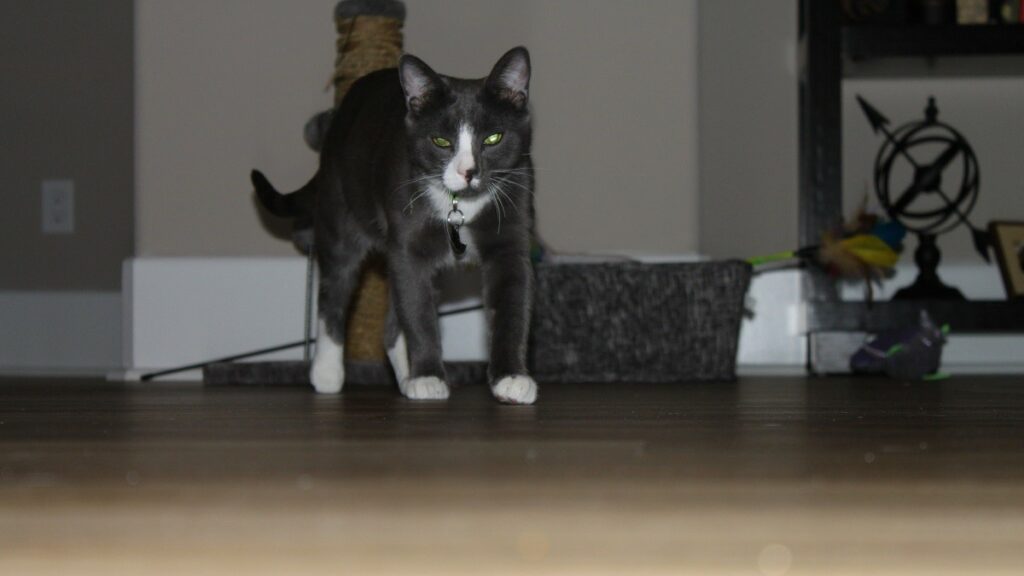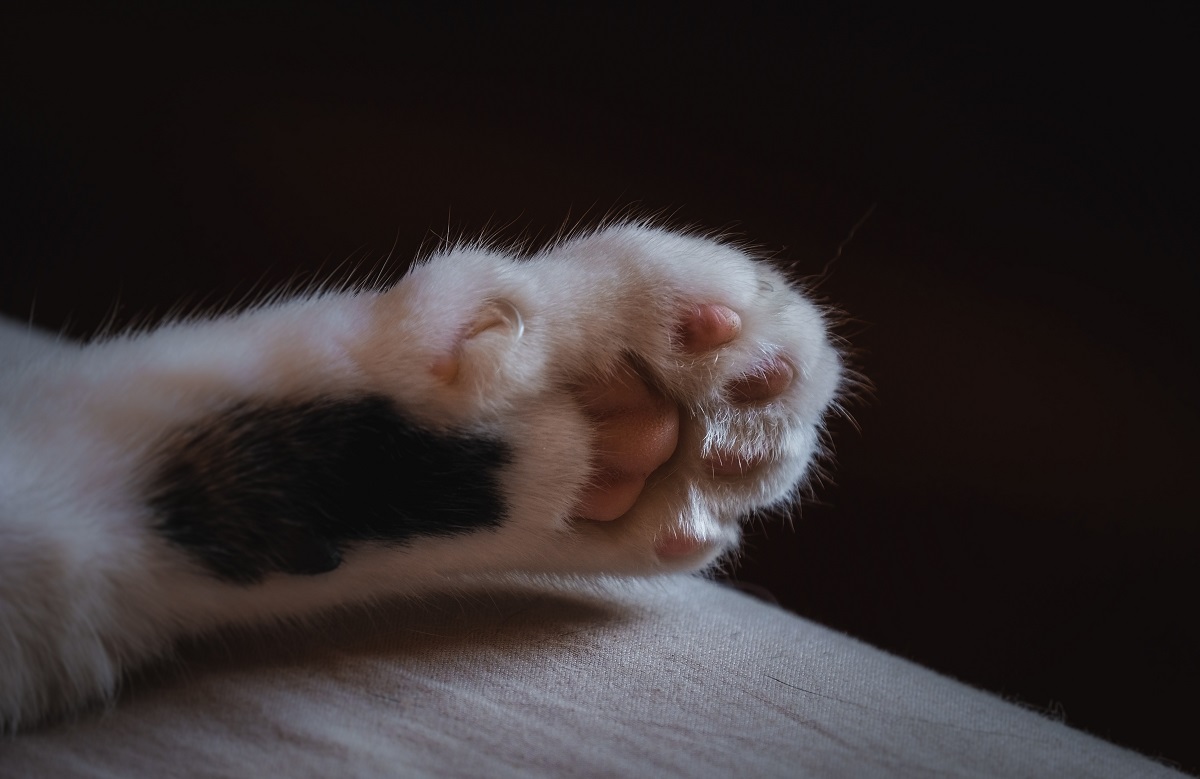Declawing might sound like a simple fix for scratched-up furniture, but for your cat, it’s a life-changing surgery that often leads to more problems than it solves. While the idea of never dealing with claw marks again might be tempting, the truth is that declawing is painful, risky, and usually unnecessary.
In this guide, we’ll dig into what declawing really involves, the long list of downsides, what the experts say, and most importantly, what you can do instead. If you’ve ever considered declawing, this article will help you understand why it’s a bad idea and how to protect your couch (and your cat) the right way.
What Declawing Actually Is
(Spoiler: It’s Not Just a Fancy Nail Trim)
Let’s get one thing straight: declawing isn’t like cutting your kitten’s claws a little shorter. It’s a surgical amputation of the last bone of each toe. That’s right. Each claw is attached to a small bone, and to remove the claw permanently, that entire bone has to go.
Imagine someone cutting off each of your fingers at the last knuckle. That’s what declawing is to your cat.
The procedure is usually done under general anesthesia and can be performed using a scalpel, clipper, or laser. After surgery, cats are left to walk on freshly amputated toes while their paws try to heal.
It’s painful. It’s risky. And it’s rarely necessary.
The Common Reasons People Consider Declawing
People usually don’t declaw their cats out of cruelty. They do it because they:
- Want to protect furniture
- Are worried about getting scratched
- Have a family member with a health condition
- Think the cat might get surrendered if it continues to scratch
These are all valid concerns, but they can be solved without putting your cat through surgery. Declawing might seem like a quick fix, but as you’re about to see, it often creates bigger problems.
The Not-So-Obvious Consequences of Declawing
Declawing doesn’t just take away a cat’s claws. It affects how they walk, how they play, and how they feel about the world around them. Here’s a closer look at the fallout.
1. It Causes Long-Term Pain
Declawed cats often develop chronic pain in their paws, joints, and spine. When you change the way a cat walks, it puts extra pressure on other parts of the body. Over time, that leads to arthritis, stiffness, and sometimes lifelong discomfort.
2. It Can Lead to Litter Box Problems
Scratching in litter with freshly wounded paws? No thanks.
Cats often associate the litter box with pain after surgery and start avoiding it. This means they might start going on soft rugs, laundry, or beds instead. And once that habit forms, it’s hard to break.
3. It Increases the Risk of Biting
Without claws, cats lose one of their main ways to defend themselves. So what do they do instead? They bite.
A declawed cat might seem gentler, but many become more aggressive, especially if they feel scared or cornered. And unlike a scratch, a bite is much more likely to get infected.
4. It Messes With Their Behavior
Cats scratch to stretch their muscles, mark territory, and de-stress. Take that away, and you’ve removed one of their most important outlets.
Many declawed cats become anxious or withdrawn. Some overgroom. Others lash out. All of this can make them harder to live with than the original scratching ever did.
What Vets and Behavior Experts Say
More and more veterinarians are speaking out against declawing. While the American Veterinary Medical Association doesn’t outright ban it, it strongly discourages it as an elective procedure.
And major vet chains like Banfield, VCA, and BluePearl have stopped performing it altogether. Why? Because they’ve seen the damage it causes.
Behaviorists are just as vocal. Studies show that declawed cats are more likely to:
- Avoid the litter box
- Bite
- Show signs of chronic stress or anxiety
- Develop gait issues or arthritis
In short, it’s not just an ethical issue. It’s a medical and behavioral issue as well.
Declawing Is Illegal in Many Places
In the United States, declawing is already banned in:
- New York
- Maryland
- Virginia
- Washington, D.C.
Several cities in California, Colorado, Pennsylvania, and other states have local bans. And outside the U.S., declawing is outright illegal in more than 40 countries, including:
- The United Kingdom
- Australia
- Germany
- Switzerland
- Israel
So while it’s still legal in many U.S. states, the trend is clear: more places are recognizing declawing for what it is; unnecessary harm.
But What If It’s the Only Option?
Declawing should never be the first, second, or even third choice. But in very rare cases, such as a cancerous growth in the claw or a severe injury, it might be necessary. These cases are the exception, not the rule.
If your vet recommends declawing as a behavioral solution, get a second opinion. A good vet will always explore alternatives first.
Safe and Humane Alternatives to Declawing
Let’s focus on what you can do instead. These methods are safer, more humane, and, bonus, usually work better in the long run.
1. Regular Nail Trimming
Keep your cat’s nails short by trimming them every 1–2 weeks. Shorter nails mean less damage and fewer accidental scratches.
Start slow, use proper cat clippers, and reward your cat after each trim. If you’re nervous, ask your vet or groomer for a quick tutorial.
2. Provide Plenty of Scratching Posts
Cats don’t scratch to be naughty. They do it to stay healthy. Give them something better than your couch.
Ideal scratching posts are:
- Tall enough for a full stretch (at least 32 inches)
- Covered in sisal or heavy-duty carpet
- Sturdy and stable
Place them near high-traffic areas or where your cat likes to hang out. And yes, it’s okay (even encouraged) to have multiple!
3. Use Nail Caps
These soft, silicone caps fit over your cat’s claws and are glued on with pet-safe adhesive. They fall off naturally in a few weeks and can be reapplied.
They don’t hurt, they’re easy to use, and they keep your furniture safe. Many cat parents swear by them.

Dear Joey, there are rumors of something called ‘declawing.’ Don’t be fooled, it’s not a fancy manicure session. It’s more like trying to catch the red dot… but with your toes missing! Imagine, us, regal felines, reduced to toe-less trotting. How could we perfect our dignified strut? Or show that pesky furniture who’s boss? #Don’tTouchMyWolverineClaws #MurderMittensForLife #NoPawNoPeace
Winston
4. Try Deterrents
If your cat keeps going after a certain couch or chair, make that spot less fun. Try:
- Double-sided tape
- Aluminum foil
- Furniture covers
- Citrus sprays (cats usually hate the smell)
Then put a scratching post right next to the problem area to encourage a better choice.
5. Train With Positive Reinforcement
Yes, cats can be trained. Use treats, toys, or praise to reward your cat when they scratch in the right place.
Don’t punish them for scratching the wrong thing. It just confuses and scares them. Instead, calmly redirect them and reward them for doing it right.
6. Use Pheromones
Products like Feliway mimic calming cat pheromones and can help reduce anxiety-related scratching. Plug-in diffusers or sprays can create a more relaxed environment.
What About Immunocompromised Owners?
If someone in your home has a health issue that makes cat scratches especially risky, talk to your doctor and vet together. Often, regular nail trims, soft caps, and supervised interactions are enough to keep everyone safe, without surgery.
The CDC does not recommend declawing cats for this purpose and encourages non-surgical strategies instead.
Declawing Doesn’t Save Cats
Some people believe that declawing will help keep a cat in its home and prevent it from being surrendered. But here’s the twist: behavior problems from declawing are also a top reason cats are rehomed.
So the surgery meant to “save” a cat from being given up might end up pushing it out of the home anyway.
Cats that bite, avoid the litter box, or become withdrawn are harder to adopt and more likely to end up in shelters. Protecting their natural behavior actually gives them a better shot at a forever home.
It’s Time to Rethink Declawing
Declawing used to be seen as a normal, even routine, procedure. But we know better now.
We know that it causes pain.
We know that it can lead to long-term physical and emotional issues.
We know that cats have better, safer options.
Scratching is part of who your cat is. It doesn’t have to ruin your furniture, and it definitely doesn’t have to cost your cat their comfort and safety.
Key Takeaways
- Declawing is not just a nail trim. It’s the amputation of each toe’s last bone.
- The surgery can cause chronic pain, behavioral issues, and mobility problems.
- Many veterinarians and countries strongly oppose or ban the practice.
- Declawed cats are more likely to bite, avoid the litter box, and experience stress.
- There are many safer alternatives, like scratching posts, nail trims, and soft caps.
- Declawing doesn’t prevent surrender. It often increases the risk of it.
Final Thought
Cats give us so much: companionship, affection, and plenty of sass. The least we can do is respect their bodies and behavior.
Skip the surgery. Trim the nails. Buy the scratching post. Your cat, and your furniture, will thank you.
Sources:
– AVMA: Declawing Policy – www.avma.org
– Humane Society Veterinary Medical Association – www.hsvma.org
– Journal of Feline Medicine and Surgery
– Centers for Disease Control and Prevention – www.cdc.gov
– American Association of Feline Practitioners – www.catvets.com
Recent Posts
Your Cat Might Be a Furry Little Healer… or at Least a Fuzzy Alarm System If you’ve ever had your cat suddenly become extra clingy when you’re under the weather, you’re not alone. From...
Cats are experts at hiding things, socks under furniture, their disdain for your playlist, and, unfortunately, symptoms of illness. In the wild, showing weakness could make them a target, so even...


